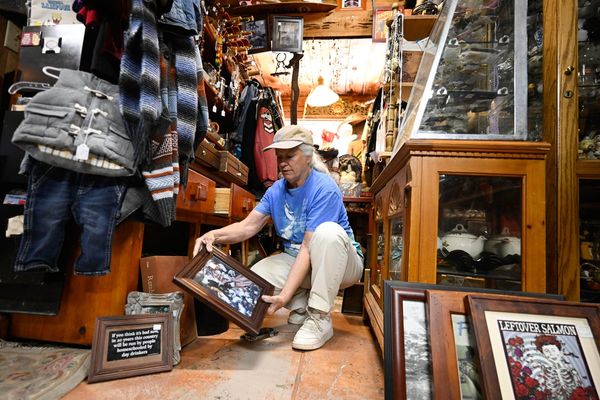
Pete Alonso was born at the wrong time. For over 100 years, home run hitters were the highest-paid players in the game—defense, baserunning and ability to hit for average not required. Ralph Kiner, a prototype, was famously credited with a line that originated with a Pittsburgh Pirates teammate, pitcher Fritz Ostermueller: “Home run hitters drive Cadillacs and singles hitters drive Fords.”
And then came analytics.
Analytics gave front offices better tools for valuation. It is the biggest reason a robust market predictably never developed for Alonso, even though, since his stunning 53-homer debut in 2019 he has hit more home runs than anybody except Aaron Judge. Alonso returned to the New York Mets, figuratively dragging his bat as if after a strikeout, on a two-year, $54 million deal. It’s essentially a one-year $30 million deal with Alonso’s option to return to the Mets in 2026 for $24 million or hit the market again.
It’s a great deal for the Mets and president of baseball operations David Stearns, who waited out the nonexistent market to get righthanded power protection for Juan Soto without the anchor of a long-term deal for a corner player without speed or power. For Alonso, he made the best of a bad market. Hitting behind Francisco Lindor and Soto gives him a bevy of traffic on base to post a big bounceback season and re-enter the market.
But this won’t change: the market still won’t value pure sluggers like Alonso any higher, especially a year older.
Imagine if Alonso was on the market in the heyday when teams thought home runs and runs batted in drove the market. Go back 32 years and it’s easy to imagine, because Cecil Fielder was Alonso. Though not a free agent, Fielder, in January 1993, had the right to ask for a trade from the Detroit Tigers, a team only months earlier purchased by Mike Ilitch. It’s uncanny how similar the numbers are for Fielder then and Alonso now:
The valuation for the two first basemen was entirely different. The Tigers looked at Fielder’s home runs and RBIs (he led the league in both over the previous three years) and gave him a five-year contract worth $36 million, slotting him an eyelash behind Barry Bonds as the highest-paid player in the game ($7.2 million to $7.29 million).
“The market is determined by the Cecil Fielders and Barry Bonds. Baseball is a sport in transition. The salaries, I think there’ll be a correction somehow along the way somehow … Nobody’s had the numbers like Cecil has, and he’ll continue to make history,” said Ilitch.
He was wrong about the salaries and wrong about Fielder. Over the next five years, the big first baseman averaged just under 1.0 WAR per season. Detroit traded him four years into the deal. But back then, nobody was using WAR. If they had, Ilitch would have known that players like Fielder should not be “determining the market.”
Compare Fielder and Alonso during the three seasons leading up to their contracts:
MLB Three-Year Rank Before Contract
For a more recent example, look how Ryan Howard cashed in on being a one-dimensional slugger. In April 2010, Howard was two years away from free agency when the Philadelphia Phillies handed him a five-year, $125 million extension. Like Fielder, Howard became the second-highest-paid player in the game ($25 million AAV), behind only Alex Rodriguez ($27.5 million).
Like Alonso, Howard was a 30-year-old home run hitter with little to no value on defense or the bases. He did, however, walk more and slug better than Alonso. In the three prior seasons leading to the new contract, Howard was first in home runs but 71st in WAR. The WAR equivalent today would make Nationals first baseman Nathaniel Lowe the second-highest-paid player in the game.
Over the five years of that contract, Howard was worth -4.8 WAR. Not 4.8. Negative 4.8.
In addition to WAR, modern front offices have better aging models. Nobody with a grasp on analytics wants to pay long-term for the decline years of big-bodied first basemen whose value is almost entirely derived from power. It’s not just Fielder and Howard, but also Mo Vaughn, Chris Davis, Richie Sexson, Rhys Hoskins, et al.
Alonso had dreams of approaching long-term deals in the neighborhood for Freddie Freeman (six years, $162 million) and Matt Olson (eight years, $168 million), but that was never going to happen, not with the extensive information teams have at their disposal now. Since 2019, when Alonso debuted, Freeman has been sixth in WAR (29.3), Olson is ninth (26.3) and Alonso is 32nd (19.8). Rare is the team, if any, that is buying players on emotion and home runs the way Ilitch did in 1993.
There is another major concern with Alonso besides how he ages based on his profile: his ability to hit elite velocity. As velocity goes up, Alonso sees more of it and does less with it. His average against fastballs 95 mph and higher has gone down four straight years to a career-worst, with his home runs against elite velocity also bottoming out:
Alonso vs. Fastballs 95+ mph
We are deep into the information age. It has changed how the game is played. And it has changed how players are valued.
This article was originally published on www.si.com as Pete Alonso’s Mets Deal Is a Product of the Age of Analytics.







